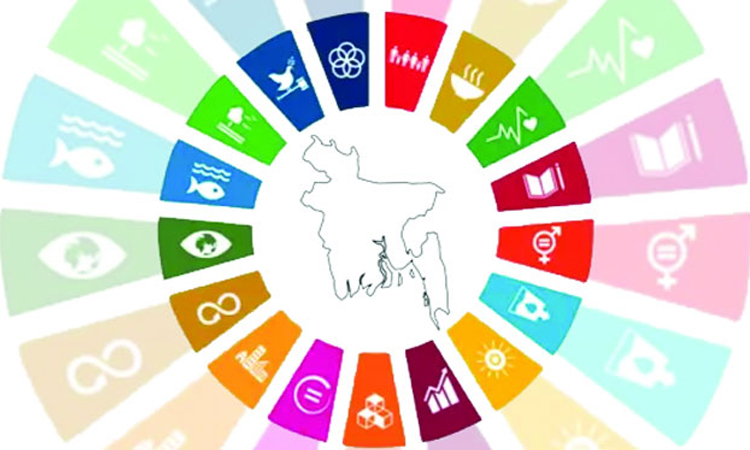The fourth Sustainable Development Goal strives to ensure inclusive
and equitable quality education, as well as to encourage lifelong
learning opportunities for all. This objective ensures that all girls and
boys receive free primary and secondary education by 2030. It also
seeks to ensure equitable access to affordable vocational training,
erase gender and wealth disparities, and achieve universal access to
high-quality higher education.
Now, the question is how close Bangladesh is to accomplishing this
objective?
According to the last published Sustainable Development Solutions
Network (SDSN) SDG global report, Bangladesh is now ranked 101 in
the 2023 evaluation index of SDG. While India and Pakistan are ranked
112 and 128 respectively in the list.
Another report from the Ministry of Primary and Mass Education states
that the number of primary students in 2022 was 20 crore 54 lakh 6
thousand 91 children. The number of boys is 1 crore 24 thousand 951
and the number of girl students is 1 crore 52 lakh 1 thousand 140. The
country has achieved near universal enrollment in primary education,
with net enrollment rates reaching approximately 98% according to the
Bangladesh Bureau of Educational Information and Statistics
(BANBEIS).
Although 98% children in Bangladesh can reach primary school, there is
a crisis in the quality of education, according to a report by the World
Bank.
while progress has been made towards attaining SDG 4 significant gaps
still exist. Such as Children from marginalized communities often face
barriers such as poverty, cultural norms that prioritize work over
education for boys or girls, and lack of transportation to schools. Here
children with disabilities are particularly disadvantaged; According to
recent national-level data, over half of Bangladeshi disabled children do
not attend any formal school. The Bangladesh Bureau of Statistics
(BBS), with technical assistance from UNICEF, conducted the National
Survey on Persons with Disabilities (NSPD) 2021. According to the
report, only 65% of children with disabilities (ages 5 to 17) are enrolled
in primary education, and only 35% are enrolled in secondary school.
Sixty percent of children with disabilities between the ages of five and
seventeen are not enrolled in school.
There is also a disconnection between educational outcomes and
market demands; graduates often lack the practical skills necessary for
employment in various sectors such as technology. This gap results in
high unemployment rates among educated youth who are unprepared
for the workforce. Assessments conducted by organizations like the
Programme for International Student Assessment (PISA) indicate that
Bangladeshi students perform below average compared to their peers
globally.
In this situation, Bangladesh must take a multifaceted approach to meet
Sustainable Development Goal 4 (SDG-4) by 2030. This involves
raising school funding, improving teacher training, supporting inclusive
education, strengthening early childhood education, utilizing technology,
and incorporating communities and parents in the educational process.
Adequate finance is essential for developing and sustaining educational
infrastructure, providing resources, and ensuring teachers receive
adequate salaries. Continuous professional growth is also required for
professionals, who form the foundation of the educational system.
Regular workshops, training programs, and access to educational
materials can assist teachers stay current on the latest teaching
approaches and topic expertise. Inclusive education is critical for
ensuring that no child stays behind, and it can be facilitated by
designing accessible educational institutions and offering specialized
instruction for educators. Strengthening early childhood education plays
an important role for every child’s lifelong learning, and investing in
programs that focus on cognitive, emotional, and social development
can have long-term benefits for the entire educational system.
Leveraging technology may also enhance access to excellent
education, particularly in remote and underprivileged areas, as well as
empower teachers to use technology effectively in their teaching
practices. modifications to policy and successful implementation are
required to achieve inclusive, equitable, and effective educational
policies. Regular evaluation and monitoring of educational programs is
vital to identify gaps and areas for improvement.
At last, we may state that,
to dramatically enhance educational outcomes, structural improvements
within the educational framework are required, including better
evaluation systems that emphasize on comprehension rather than rote
retention.

